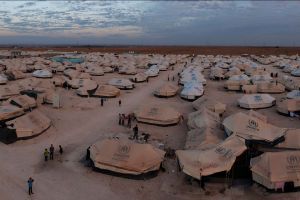The report examines two important locales experienced by refugees: permanent camp settings, such as in Za’atari, Jordan, and transitory arrival centers, such as in Lampedusa, Italy.
The world’s refugee population currently stands at over 19 million, the large majority of whom reside in developing countries. The quality and availability of healthcare for refugee populations vary according to the geographic setting, availability of adequate resources, and proper training of healthcare providers. This report investigates the top health issues faced by refugees in short- and long-term settings. The report compares and contrasts two important settings for healthcare provision for refugees: permanent camp settings, such as in Za’atari, Jordan, and transitory arrival centers, such as in Lampedusa, Italy, which is a major port of arrival for refugees. First, the most pressing health concerns of refugees and major barriers to healthcare provisions are identified in Lampedusa versus in Za’atari. Second, coordination among health-related agencies is addressed, including successful and unsuccessful models. Third, gaps in training for healthcare providers are explored, especially opportunities to improve culturally competent care. Through literature and Internet searches, this report has gathered background information on these subjects, developed areas of priority, and identified leaders and experts in the fields of international policymaking and refugee health in either Jordan or Italy. This background research was utilized to develop a set of questions to interview these leaders and experts. The report concludes with a set of recommendations to improve healthcare services for refugees in both temporary and long-term settings, including unaddressed health needs, models for coordination among providers, and types of training for healthcare providers. Comparison of these two settings helps to not only elucidate important differences but also to identify overlapping needs for health services for refugees.
